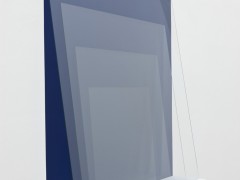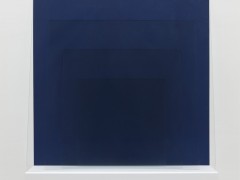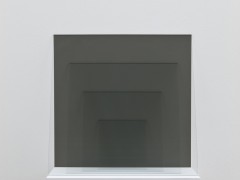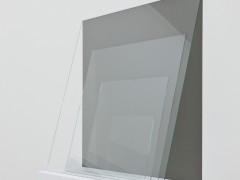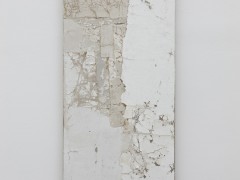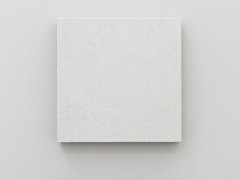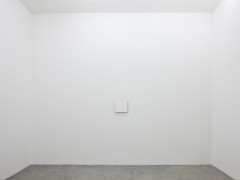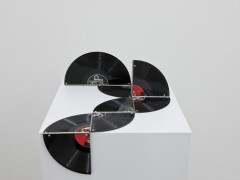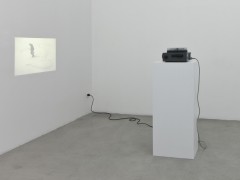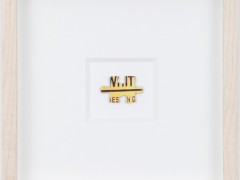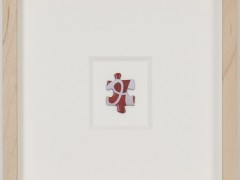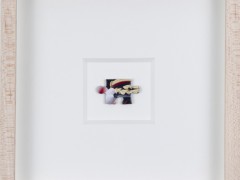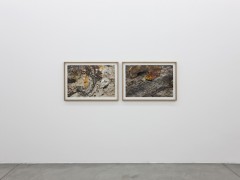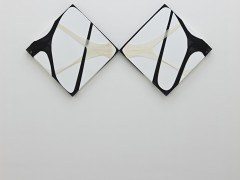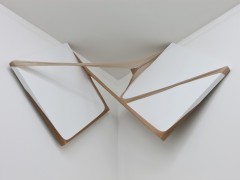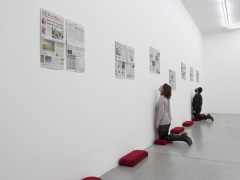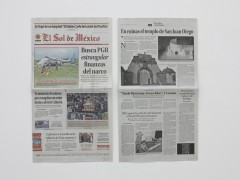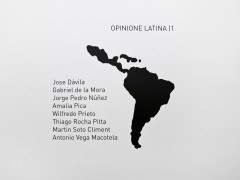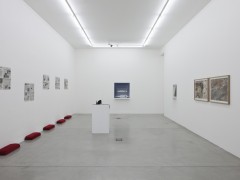OPINIONE LATINA |1
January 30 – March 30, 2013
Francesca Minini Gallery, Milan
The first stop of a journey through Latin America, OPINIONE LATINA gives voice to an aesthetic dimension so lively and energetic that it defies classification in any single style, embracing and reinterpreting the most contemporary currents in visual research.
The coexistence of such diverse expressions brings to life a cultural panorama full of variety, rich in contradictions and stimuli that reflect the economic and political complexity of these countries. Social urgency, a sense of disorientation and nostalgia, revisiting the past, and bonds with nature are some of the themes explored by the artists whose work is on display.
José Dávila, 1974 Mexico. Dávila’s work is part of the declared reinterpretation of modernist and minimalist models. Homage to the Square is a critical tribute to the work of Josef Albers, which is strengthened and amplified by the Mexican artist. Through a conscious and analytic appropriation Dávila broadens the scope of his predecessor by superimposing a series of square glasses over the monochrome paintings, to create an echo of colors of various tonalities made by the light which filters through.
Gabriel De La Mora, 1968 Mexico. A strong temporal dimension pervades the work of De La Mora, a meticulous and passionate researcher of plafonds and ceiling decorations of Mexican buildings of the late 19th century, painstakingly reassembled of aluminium and thus bringing to life an artistic expression that hovers between painting, design and sculpture, bestowing a new eternity to these remains so full of memories of stories from the past.
Jorge Pedro Núñez, 1976 Venezuela. Word play and artistic references, a dip into Neoconcretism through a special revisitation: Lygia Clark and Lucio Fontana are the two points of reference for the work Fontana et le chien that Núñez uses to reinvent the concept of space in art through the creation of new forms.
Amalia Pica, 1978 Argentina. Nostalgia and humor permeate the 35mm slideshow Islands by the London-based Argentine artist. The work plays with the symbols that Europeans often associate with the idea of America Latina and is full of melancholy for a world that is far away. A boy draws an island with a palm on an expanse of snow. The bucket becomes his coconut. Pica works with sculptures, drawings, and projections which often suggest the lack of standardized systems of communication.
Wilfredo Prieto, 1978 Cuba. Three small works that are so dense they evoke worlds of oppression and violations (Apartheid), of political hegemonies and repressions (Pinochet), and of modern globalized societies (Coca-Cola). Prieto’s jigsaw pieces implode in their expressive and evocative force. The Cuban artist, who is fully capable of grand monumental works, conserves and amplifies his creative energy in a small and precious puzzle pattern that rises to the level of an icon of social, political and economic criticism.
Thiago Rocha Pitta, 1980 Brazil. Movement, transformation, and harmony with nature are the sensations evoked by the Brazilian artist. Two instants of a drop of honey running over a rocky terrain, the amber color, the glittering reflection of the sun, transmit a sense of wonder that makes us feel part of a natural process in progress. Rocha Pitta’s work evokes a sense of impermanence that the infallible power – for us still thick with uncertainties – of nature exercises unceasingly, thus becoming a co-author along with the artist.
Martin Soto Climent, 1977 Mexico. With a simple creative gesture Soto Climent inaugurates a new vocabulary of signs: in his work everyday household objects are invested with an unexpected aesthetic strength. Tension between movement and space, the forces of separation and attraction, masculine and feminine elements are contrasting energies that dialogue in his works, seen not as elements in opposition but rather as two complementary parts that define themselves against each other.
Antonio Vega Macotela, 1980 Mexico. The impenetrable communication code used by Mexican drug traffickers becomes an installation with an almost sacred aura, a hymn of reverence and fear. Murmurs, whispers from that the pages of El Sol de Mexico. An imprisoned drug dealer taught the artist the anamorphic code used to communicate with the outside world. Only by approaching the wall on one’s knees do the messages reveal themselves, forcing the viewer into a position that recalls praying or the prelude to a cruel execution, thus rendering us accomplices or condemned.
Practical Info
Via Massimiano, 25
20134 Milano
T +39 02 26924671
F +39 02 21596402
info@francescaminini.it
Opening times
Tuesday – Saturday 11 – 19.30


 Home
Home
